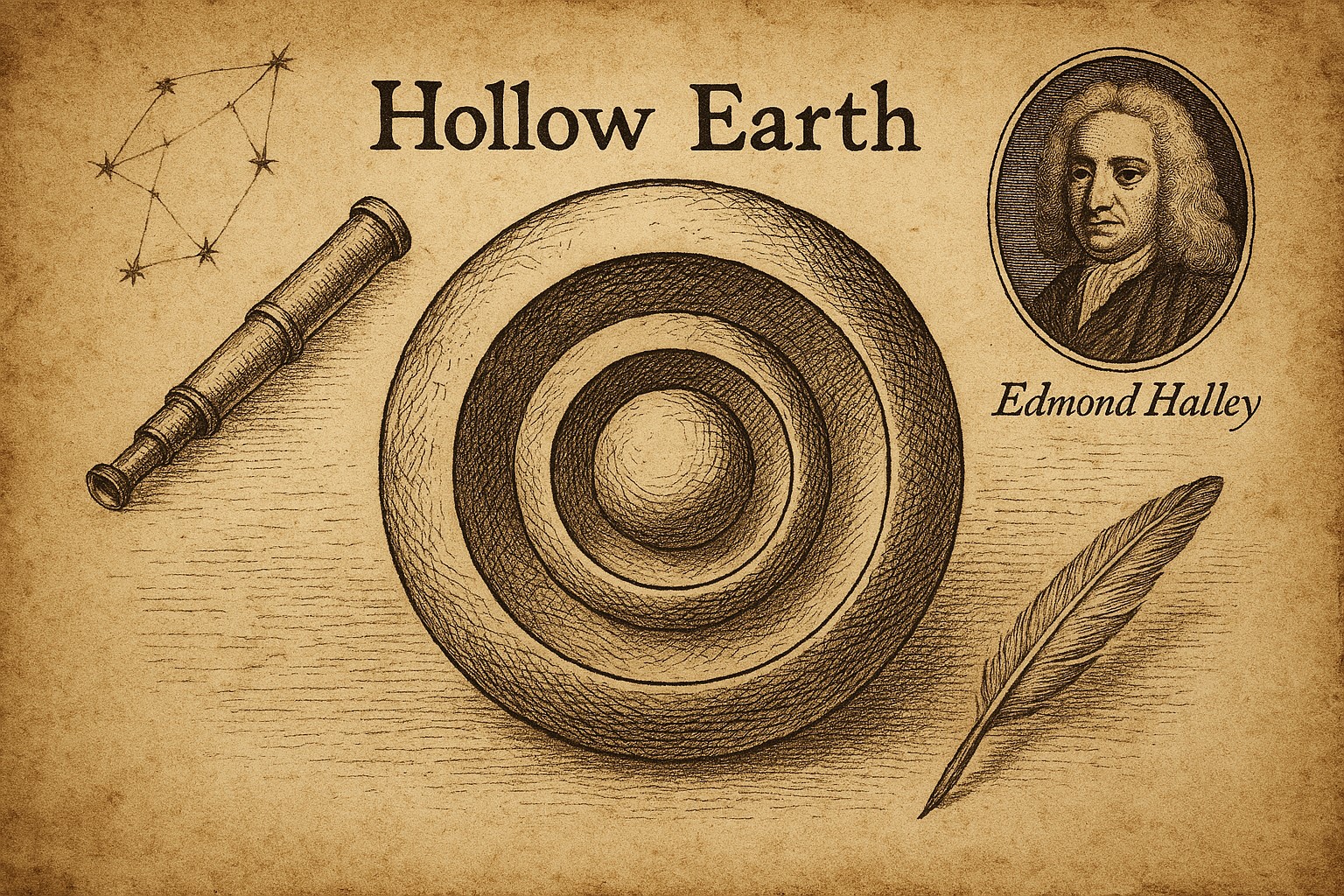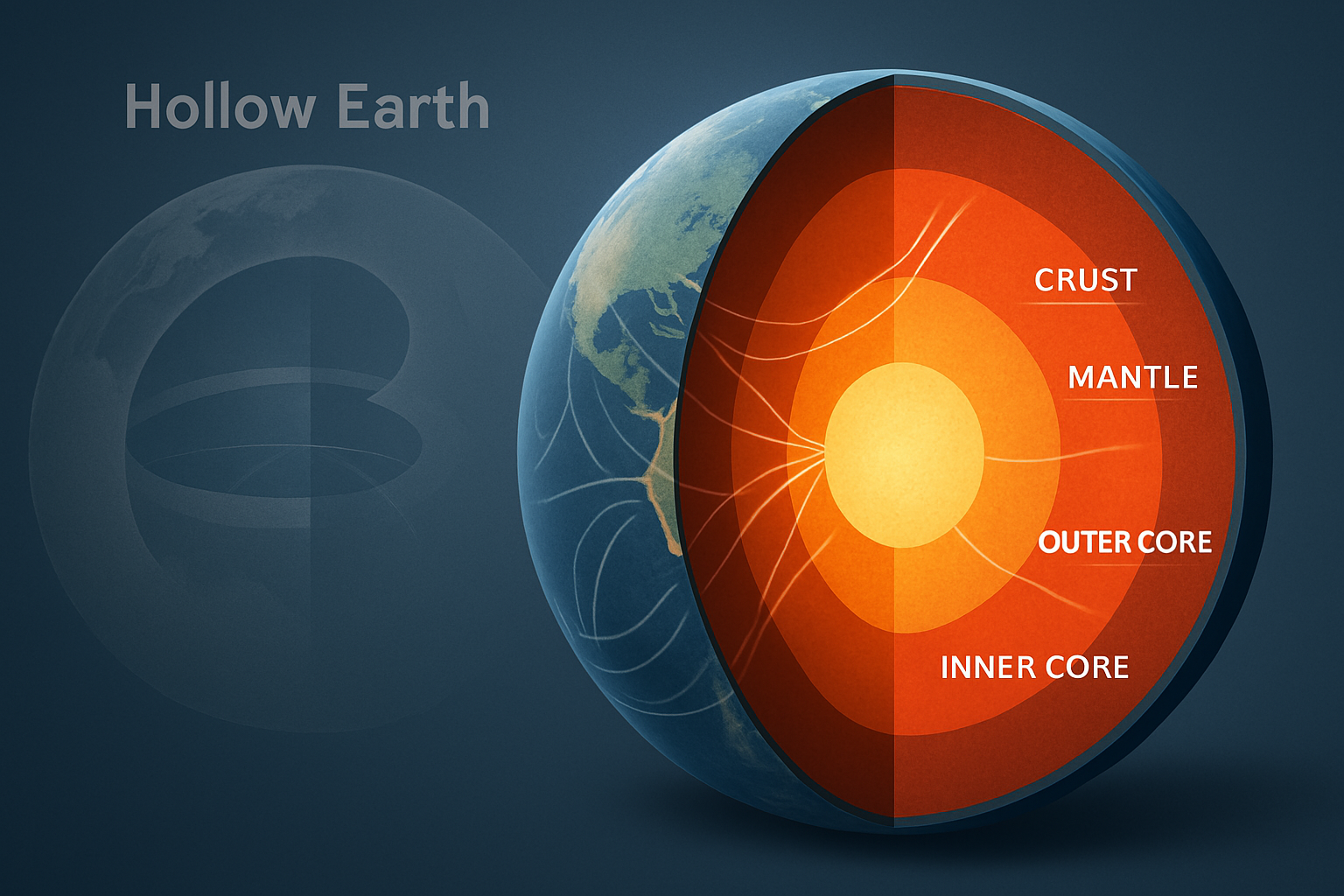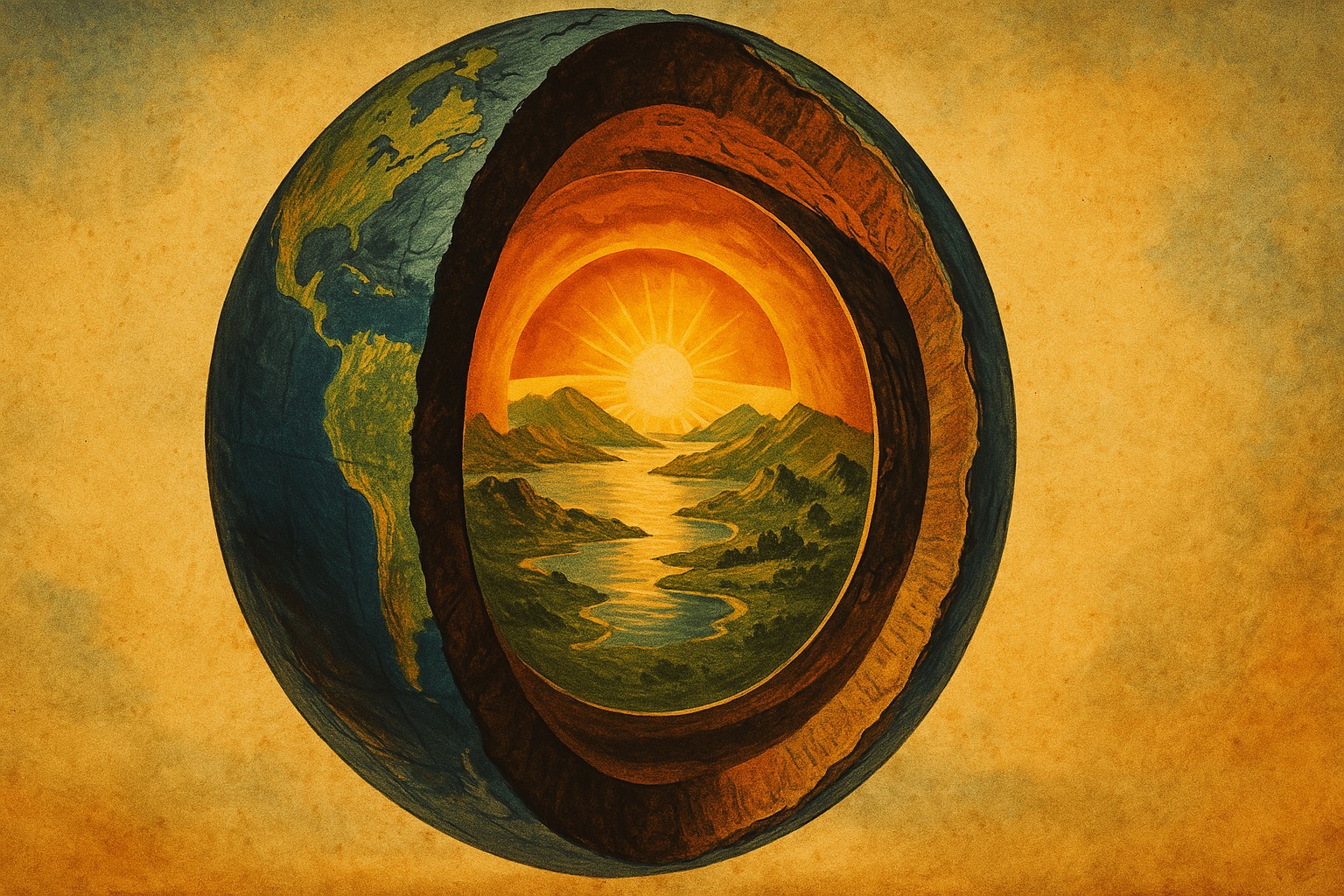Imagine a world nestled within our own—a realm of hidden continents and expansive oceans beneath the Earth’s crust. The Hollow Earth theory raises exactly this idea, marrying fantasy with intrigue. Is it a discarded fiction, or does it hold undiscovered truths?
The Origins of the Hollow Earth Theory
Most people know Edmond Halley for predicting the return of the comet that now carries his name. But in 1692, this famous astronomer also proposed a bold idea about the Earth itself. He suggested that our planet might not be solid all the way through. Instead, he believed it could be made up of several hollow shells, each nested inside the other like a set of Russian dolls.
Halley’s theory wasn’t fantasy. It came from real scientific questions at the time. He was trying to explain unusual patterns in Earth’s magnetic field. With limited tools available, he offered a model that included inner spheres, possibly with their own atmospheres and magnetic fields. Some versions of his idea even allowed for life inside the Earth.
Though the idea didn’t gain support among scientists, it sparked interest in other areas. Over time, it became a popular theme in books and stories. Writers used it to imagine secret lands and unknown worlds deep beneath the surface. These stories mixed science, fantasy, and adventure in ways that caught the attention of readers around the world.

Scientist or Storyteller?
By the 19th century, the Hollow Earth theory had made its way from scientific journals to the pages of popular fiction. Writers like Jules Verne and Edgar Allan Poe used it as a foundation for their tales. Verne’s “Journey to the Center of the Earth” took readers on a trip through underground caverns filled with ancient creatures and vast hidden landscapes. Poe’s work also hinted at mysterious inner worlds, though in darker and more symbolic ways.
These stories became hits. They gave readers a sense of wonder and the thrill of exploring the unknown. At the same time, the real science community moved in another direction. As new tools helped scientists learn more about the Earth’s interior, the idea of a hollow planet started to fade from serious discussion. But it didn’t fade from people’s imaginations. The thought of a hidden world beneath our feet stayed alive in books, movies, and conversations—sometimes even outside the realm of fiction.
The Scientific Perspective
Scientists have largely dismissed the Hollow Earth theory, favoring tectonic plate models and geological evidence. The Earth’s outer crust is solid, but at greater depths, exists semi-molten rock and an iron core. Layers upon layers of evidence from seismology and geophysics confirm this understanding.
The movement of seismic waves serves as a speakerphone announcing the Earth’s layered structure. When these waves travel through the planet during an earthquake, the speed and direction shifts reveal much about the core. Such data has only solidified geologists’ geological models, leaving little room for a hollow interior.
Seismic Revelations
Seismic studies offer a window into Earth’s makeup. When earthquakes occur, they emit waves that travel through various layers. Scientists use this information to map the inside of our planet, finding no evidence of voids or massive hollow spaces.
This method allows researchers to estimate density and composition at different depths. The presence of a hollow core would alter wave behavior, which hasn’t been observed. The theory faces the solidly grounded rebuttal that the Earth’s inner layers are filled with liquid and solid materials.

The Hypothetical Benefits of a Hollow Earth
Despite scientific refutations, the Hollow Earth theory presents intriguing hypothetical scenarios. Imagine venturing into an untouched world beneath the surface. How would humanity respond? The allure of discovery cannot be overstated in a time where unexplored frontiers seem to diminish daily.
If such a realm exists, it could harbor unknown resources. Imagine precious minerals or alternative energy sources like geothermal reserves. The potential is boundless, although entirely speculative at this stage.
Science Fiction Meets Reality
While entertaining, thoughts of Hollow Earth remain firmly in the domain of speculation. Scientific exploration continues to reveal Earth’s mysteries, yet none support a cavernous inner world. However, the theory illustrates our endless curiosity and search for new domains to explore.
A world waiting to be discovered resonates deeply within human psyche, often driving exploration efforts. However, for now, the Hollow Earth remains another enchanting chapter in the annals of speculative fiction.
Influences on Modern Culture
Even today, the Hollow Earth theory influences popular culture. It often appears in video games, movies, and literature, resonating with audiences keen on mystery and exploration. Recent depictions continue to fuel interest and the imagination of new generations.
The allure of an expansive, undiscovered world is too tantalizing to simply fade into obscurity. From science fiction epics to blockbuster movies, the legend of a hidden world beneath our feet continues to captivate.
A Persistent Mystery in Media
The persistent fascination with Hollow Earth has birthed a multitude of creative works, including popular titles such as “Godzilla vs. Kong,” where a hollow planet plays a crucial role. These stories invite audiences to suspend disbelief and indulge in the “what if.”
Moreover, these imaginative narratives stimulate curiosity, urging viewers and readers to explore beyond the visible, sparking debates about the possibilities our planet holds.
Conspiracy Theories and Beliefs
Although largely discredited in scientific discourse, some still cling to Hollow Earth theories. It has found a place in conspiracy circles, fostering elaborate narratives about government secrets or hidden societies.
These beliefs, although on the fringes, highlight the power of myth in shaping human perception. While empirical evidence does not support these theories, the stories capture imaginations searching for remnants of unseen wonders.
Between Myth and Reality
The allure of Hollow Earth taps into an inherent human desire for mystery and adventure. It acts as a mirror reflecting societal hopes and fears regarding the unknown.
Such ideas challenge us to reconsider our place within the cosmos, expanding our horizons—albeit metaphorically—even if their foundations are as fragile as gossamer.
Scientific Exploration Continues
Current scientific endeavors focus on better understanding the Earth’s core. Advanced technology allows researchers to probe deeper than before, mapping seismic activities with increasing precision.
Discoveries about the Earth’s outer layers teach us more about its internal dynamics. Understanding volcanic activity, tectonic shifts, and heat flow remains crucial for predicting natural disasters.
Real Treasures Beneath Our Feet
While Hollow Earth remains a fantasy, real discoveries continue. Diverse ecosystems thrive in deep ocean trenches and caves, revealing new species each year. These findings enrich our understanding of life’s adaptability and evolution.
Such research underscores the vital importance of geology and biology in uncovering Earth’s truths. The knowledge gleaned from our planet assists in understanding other celestial bodies, potentially hosting life within our universe.
Whether viewed as a forgotten fantasy or secret truth, the Hollow Earth theory holds a special place in humanity’s quest for knowledge. With each new discovery, we piece together the puzzle of our world, ever leaving room for wonder.




